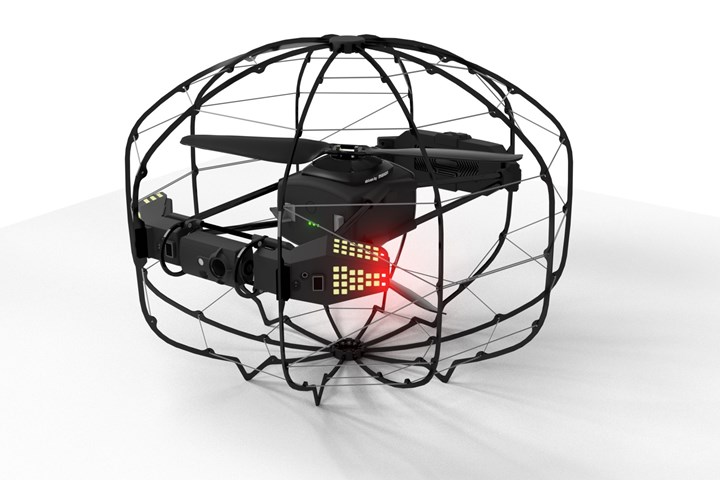Solvay, Flybotix collaborate on inspection drone
Solvay's ultra-lightweight and robust thermoplastic carbon fiber composites contribute to doubling the Asio drone’s flight time.

Asio drone by Flybotix. Photo Credit: Flybotix
Solvay Composite Materials (Alpharetta, Ga., U.S.) recently reported that it has contributed to Asio, Flybotix’s (Lausanne, Switzerland) new indoor inspection drone for industrial assets. Asio is said to provide the opportunity to perform safe and cost-effective inspections by addressing the main challenges faced by indoor drones: flight time and robustness.
The drone is built from Solvay’s ultra-lightweight thermoplastic composite structure manufactured by Solvay, and, when combined with a patented propulsion system and two rotors (instead of four), is said to double flight time when compared to traditional solutions. According to both companies, the strong composite structure also makes the drone collision-tolerant, which is critical when accessing confined areas such as oil storage tanks, underground mines or power generating facilities.
“Solvay is proud to partner with an innovative company like Flybotix," says Fabrizio Ponte, executive vice president and head of Solvay’s Thermoplastic Composites Platform. "Drones will play a considerable role in the future, and composite materials are a key enabler by providing lightweighting, increased performance and damage resistance. We look forward to seeing how Asio revolutionizes indoor inspections.”
According to Flybotix CEO, Samir Bouabdallah., Flybotix Asio offers the right combination of performance and efficiency to its users. "This was made possible thanks to Solvay’s high-performance thermoplastic composites. We are excited about working with Solvay and look forward to further developing this successful partnership.”
Related Content
-
MFFD thermoplastic floor beams — OOA consolidation for next-gen TPC aerostructures
GKN Fokker and Mikrosam develop AFP for the Multifunctional Fuselage Demonstrator’s floor beams and OOA consolidation of 6-meter spars for TPC rudders, elevators and tails.
-
Developing repairs for thermoplastic composite aerostructures
HyPatchRepair project proves feasibility of automated process chain for welded thermoplastic composite patch repairs.
-
Jeep all-composite roof receivers achieve steel performance at low mass
Ultrashort carbon fiber/PPA replaces steel on rooftop brackets to hold Jeep soft tops, hardtops.







.jpg;maxWidth=300;quality=90)




